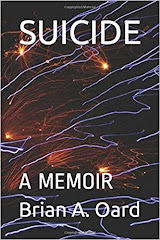Sequeling a post from 2012, here are some more scans of favorite and/or interesting book covers from my collection. Some are vintage, some relatively recent, all are cool. (And yes, 'sequeling' is a word; necessity mothered the sucker two sentences ago.)
The author photo on the back of John Boswell's Christianity, Social Tolerance and Homosexuality has long been a classic of 1970s gay geek-chic. Has any scholar's author photo (Camille Paglia's aside) more boldly invited campy commentary?
Vintage SF covers, as everyone knows, often feature truly stunning artwork. Here's a 1970s Ace paperback of Le Guin's classic.
And here's the first paperback edition of Disch's wild ride.
For the 334 cover, Disch's publishers went for more of a Robert Crumb vibe, but it's a cleaner, technologized Crumbiness.
The front cover of Gaitskill's best-known book is fairly obvious, but the back cover (below) contains the author photo that made her every litgeek's imaginary girlfriend back in the late 80s. This is the straight male/lesbian equivalent of the John Boswell pic.
Vintage Contemporaries hit a home run with this lovely evocation of American emptiness. And that bus with laser taillights is a truly weird and chilling machine in our wasted and paved-over American garden. A perfect match of cover and text.
The cover of my well-read and heavily taped paperback of Gass's chilly collection wears a psychedelic rainbow and conceals in its innards a handful of literary hallucinations that go deeper than anything induced by Owsley's Best.
Oxford chose a caressable Canova for this appropriately and beautifully restrained cover.
This vintage Kerouac cover goes all Orientalist on our asses while attempting to appeal to a "sex, drugs and long novels" demographic that I wish still existed. That and Jimi Hendrix's life are just two of the things about the 60s that should've lasted.
This is how Bantam tried to market Pynchon's hyperintellectual drunken sailor novel back in the 70s. I love the cover, but you'd never guess from it that two of the novel's best scenes involve a nosejob and an alligator hunt in the NYC sewers. Instead, this cover suggests a feminist Dune.
This 1958 paperback of Crane's poetry is a book that has traveled many miles in my carry-on bag, been read at 30,000 feet and halfway up a New Mexican mountain and, of course, in a plane soaring over the Brooklyn Bridge on the approach to La Guardia
I love this great American photo that someone at Scribners chose for Annie Proulx's first novel. Cover and text are studies in rural desperation.
Check out the marvelously suggestive still life photo on this Penguin edition of Salter's late, late expatriate novel.
The very attractive minimal front cover of Sontag's first essay collection is outshone by the absolutely gorgeous, quietly charismatic author photo on the back (below). It looks like a still from an Antonioni film.
That great arm intruding across the foreground of Stephen Barker's cover photo perfectly parallels the narrative within, positioning us as the voyeurs and partial creators of the scene we think we are seeing. Fabulous.
Faulkner's dogs seem to have been bred and posed to illustrate the title of Irwin's study.
And here's my nominee for the creepiest cover ever glued to a work of literary scholarship. Be afraid, be very afraid...of the art department at Vintage Books.




























